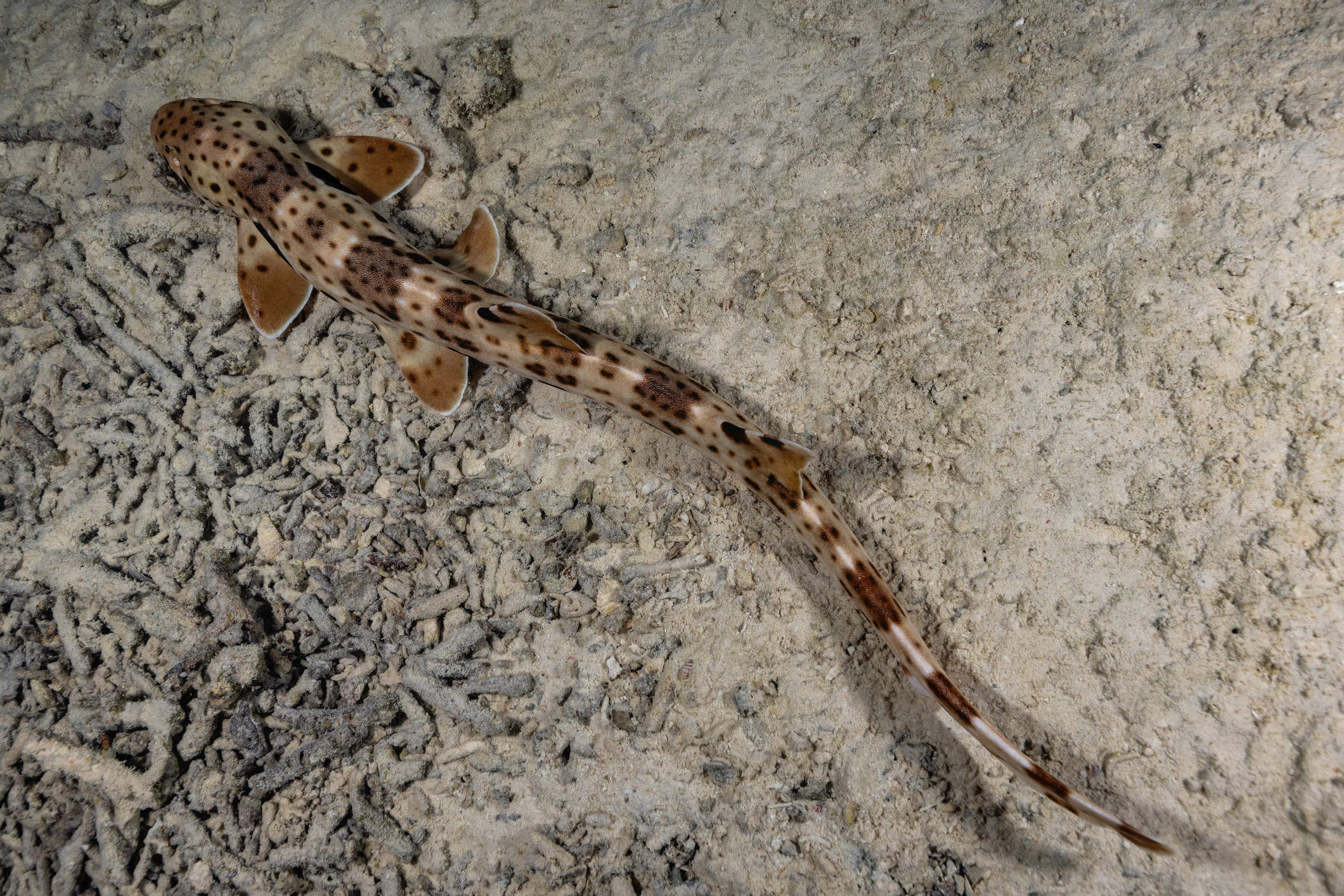
Sharks are some of the oldest creatures on planet Earth, commanding the oceans for over 400 million years!
This lengthy history has meant that there are over 500 species of sharks, from the colossal whale shark to the dwarf lantern shark, each with unique characteristics and ways of surviving.
Ready to learn more about sharks? Read on to find out all about the sharks we have swimming around our tanks at Blue Reef Aquarium Portsmouth.
What are sharks?
Sharks are a type of fish distinguished for their lack of bones, swim bladder, and characteristic triangular teeth.
Although they don’t have any bones, their skeleton is made of cartilage, which they strengthen with calcium deposits throughout their lives.
Because of the breadth of shark species, they perform a number of roles across ecosystems. Sharks like the great white are apex predators, while basking sharks are planktivorous, feeding on millions of plankton in a single mouthful!
It’s worth noting that not every fish referred to as a shark is a shark! Red tailed sharks and rainbow sharks are actually not sharks; they’re just given this nickname because of their appearance and swimming style.
Types of sharks at Blue Reef Aquarium Portsmouth
Blue Reef Aquarium Portsmouth is home to loads of species of sharks. Let’s take a closer look at a few of them so that you can spot them during your next visit.
Small spotted catshark (Scyliorhinus canicula)
The small spotted catshark is a slender, bottom-dwelling shark commonly found in the northeast Atlantic and the Mediterranean Sea.
It typically grows between 60 & 100cm in length and is characterised by its pale body covered in numerous small, dark spots.
Unlike most shark species, these sharks are nocturnal, spending daylight hours concealed in rocky crevices or buried in sand. They primarily feed on crustaceans, molluscs, and small fish, using their small yet efficient teeth to crush prey.
At our Blue Reef Aquarium Portsmouth, you can find the small spotted catshark in the Solent Seas zone in the Bay of Rays display.
Bull huss (Scyliorhinus stellaris)
Alongside the small spotted catshark in the Solent Seas zone, you can find their bulkier cousins, the bull huss.
Reaching lengths of up to 1.6 meters, it has a sturdy body with a pattern of large, dark spots across it.
This species is commonly found along rocky seabeds and coastal areas in the eastern Atlantic and Mediterranean, preferring habitats that provide shelter during daylight hours.
They primarily feed on crustaceans, cephalopods, and small fish, using their strong jaws to crush through hard shells.
Like the previously mentioned small spotted catshark, bull huss are oviparous, laying distinctive egg cases often referred to as mermaid’s purses.
Brown banded bamboo shark (Chiloscyllium punctatum)
The brown banded bamboo shark is a small, slender species of shark native to the Indo-Pacific region, particularly in shallow coral reefs and seagrass beds.
It reaches a maximum length of approximately 1.2 meters and is named for the distinctive brown bands that run along its body, most prominent in younger bamboo sharks.
This shark is a nocturnal bottom-dweller, preying on small fish, crustaceans, and invertebrates. Unlike more active shark species, they move using their flexible pectoral fins, which looks like they’re “walking” along the ocean floor.
It is capable of surviving in low-oxygen environments and can tolerate short periods out of the water, which is perfect for life in reefs.
We’ve perfectly replicated this shark’s natural habitat in our Tropical Treasures zone.
Epaulette shark (Hemiscyllium ocellatum)
The epaulette Shark is a small, benthic species primarily found in the shallow waters of Australia and Papua New Guinea, particularly around coral reefs and tide pools.
Benthic just means a plant or animal that lives on the bottom of a body of water.
It typically grows to around 1 meter in length and is recognised by the large, black “epaulette” markings behind its pectoral fins.
Just like the brown banded bamboo shark, epaulette sharks can survive in low-oxygen environments and can “walk” across the sea floor with their pectoral fins.
You can see this in action in the Tropical Treasures Exhibit.
California horn shark (Heterodontus Franciscii)
The California horn shark is a small, slow-moving species native to the eastern Pacific Ocean, particularly along the coasts of California and Mexico, giving it its name.
They reach an average length of about a metre and have a stocky body with a broad head and pronounced ridges above their eyes.
This nocturnal species inhabits rocky reefs, kelp forests, and sandy flats, where it shelters during the day and forages at night.
They primarily feed on hard-shelled prey such as sea urchins, crustaceans, and molluscs.
The two sharp spines on its dorsal fins serve as a defence mechanism against predators. Like most of the sharks at Blue Reef Aquarium Portsmouth, the California horn shark is oviparous, meaning they lay eggs!
Alongside the epaulette shark, you can spot the California horn shark in the Tropical Treasures exhibit!
Well, what are you waiting for? Our sharks are incredibly excited to show you around, so book your tickets now so that you can come and say hello!
Type
Fish
What do they eat?
Varied – some are carnivorous & others are planktivorous
Size
17cm – 18m
Water Type
Saltwater
Where are we?
Worldwide
